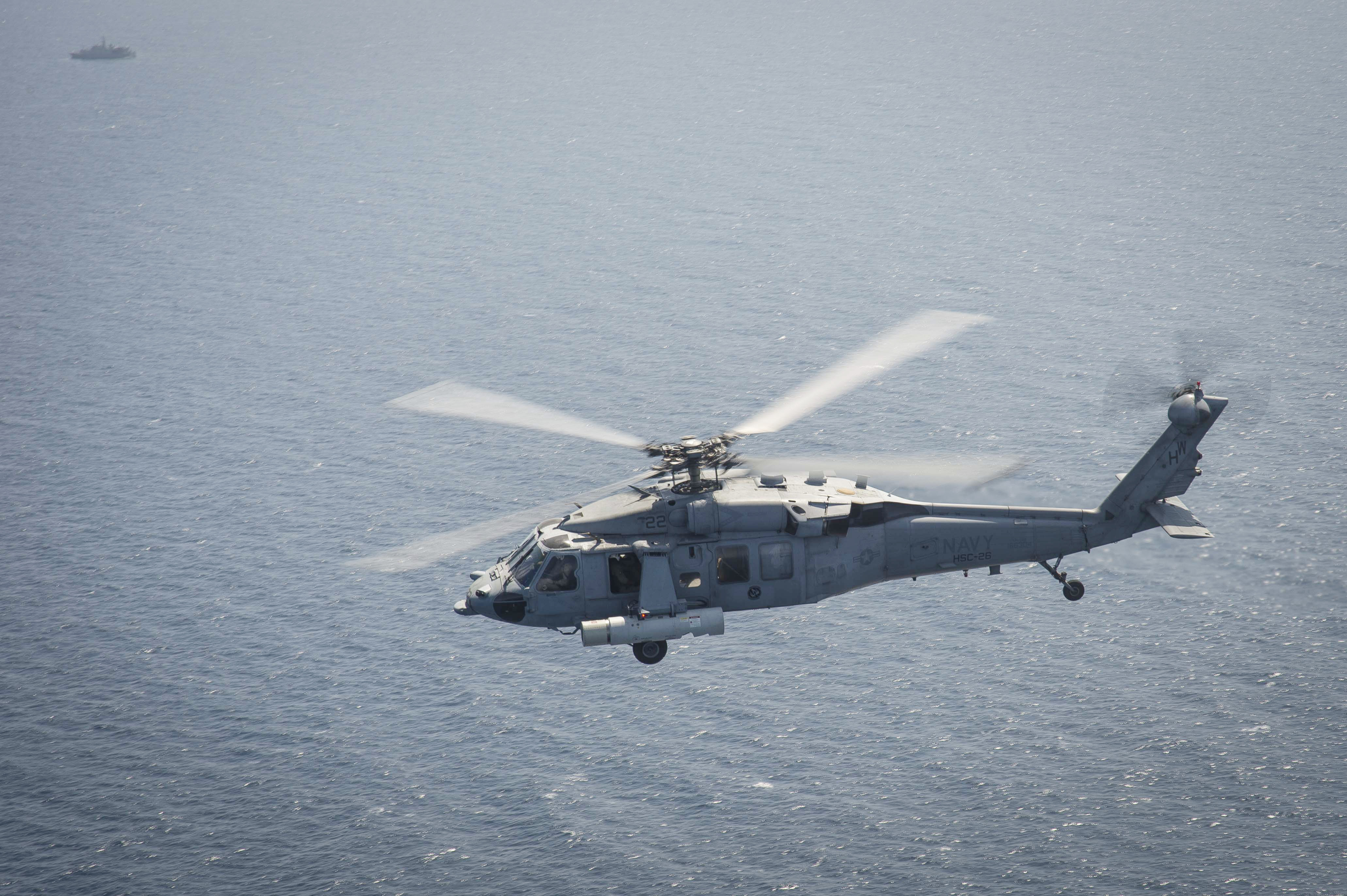
THE PENTAGON – A recently created Mine Warfare Governance Council is looking to finalize the composition of a first-increment mine countermeasures package that will not only go aboard Littoral Combat Ships but could also deploy on other ships of opportunity or be controlled by shore-based operators, the Navy’s director of expeditionary warfare (OPNAV N95) told USNI News.
Maj. Gen. Christopher Owens said in a Jan. 6 interview that the council, which he chairs, hopes to get this package out to the fleet as soon as possible and then add in capabilities as new technologies complete testing and procured.
The initial package would include the MH-60S helicopter carrying the Airborne Laser Mine Detection System (ALMDS) and Airborne Mine Neutralization System (AMNS) – all three of which reached initial operational capability in November – and an unmanned vehicle to tow the AN/AQS-20A sonar. This initial package provides detect-to-engage capabilities, but eventually the service will also add a buried- and high-clutter bottom search capability, a beach and surf zone search capability, a near-surface neutralizer and a minesweeper, with each being added as they wrap up development and test.
“We want to make the systems as flexible as possible, so while they will remain tied to the LCS as a capability LCS will have, we want to be able to put them aboard other ships if required to provide additional capacity, or capability in areas where the LCS aren’t currently” deployed, he said.
“The intent is to make [the package] as expeditionary as possible so we could deploy it rapidly. Now in some places where we know there might be a threat we can preposition the gear, either to await a ship or (on a ship) if we have a ship there. For instance, the ESBs, we have one deploying to 5th Fleet [area of responsibility] in 2017, that would be a likely candidate for additional integration.”
The Navy bought the ESBs – formerly called the Afloat Forward Staging Base – with mine countermeasures in mind, and the ship can already support the Navy’s MH-53E Sea Dragon mine countermeasures helicopter. The smaller MH-60S helo could also operate from that ship. Owens said the Navy would have to study other classes of ships to determine if they could support the mine countermeasures package, which includes aviation assets and unmanned surface and underwater vehicles.
As for shore-based expeditionary mine countermeasures, there’s reason to believe an operator ashore could conduct blue-water mine countermeasures operations – at a greater distance than the shore-based expeditionary explosive ordnance disposal and mine countermeasures units using the Mk 18 Mod 2 unmanned vehicle for harbor and other near-shore activities.
“Right now the control systems are tied to the consoles aboard the LCS, both classes of LCS, but they are potentially deployable in a mobile system,” Owens explained.
“We had one (mobile console) we experimented with in exercise Unmanned Warrior in Scotland a few months ago using different (unmanned) systems, but the concept is viable. We put together a command and control suite inside what really is a 20-foot container unit and were able to control a variety of surface, undersurface and air platforms simultaneously.”
Even as the Mine Warfare Governance Council explores these ideas, the Navy still has to get the mine countermeasures equipment fielded for the LCSs in the fleet. Owens said that after reaching IOC in November, the ALMDS, ANMS and MH-60S helicopter will go to Helicopter Sea Combat Squadron 3 (HSC-3), the training squadron, later this year. HSC-3 will use the equipment to help train instructors and develop the training curriculum for future operators. Towards the end of this year the first deployable squadron will begin training with the systems, and shipboard testing with operational units will begin late this year or early 2018 to support fleet operations with the mine countermeasures package.





